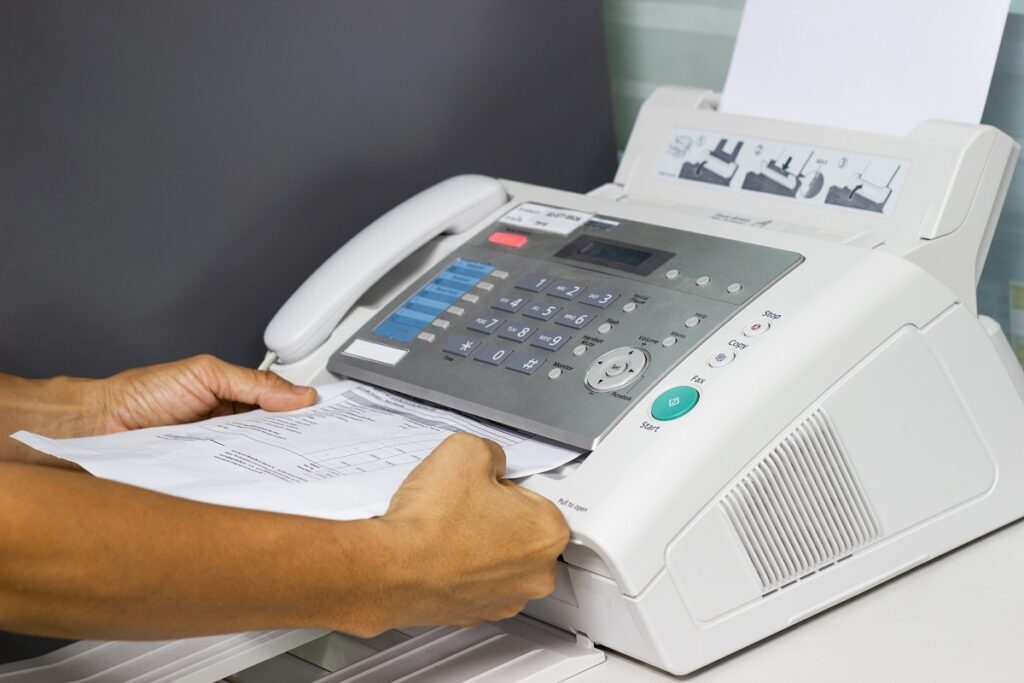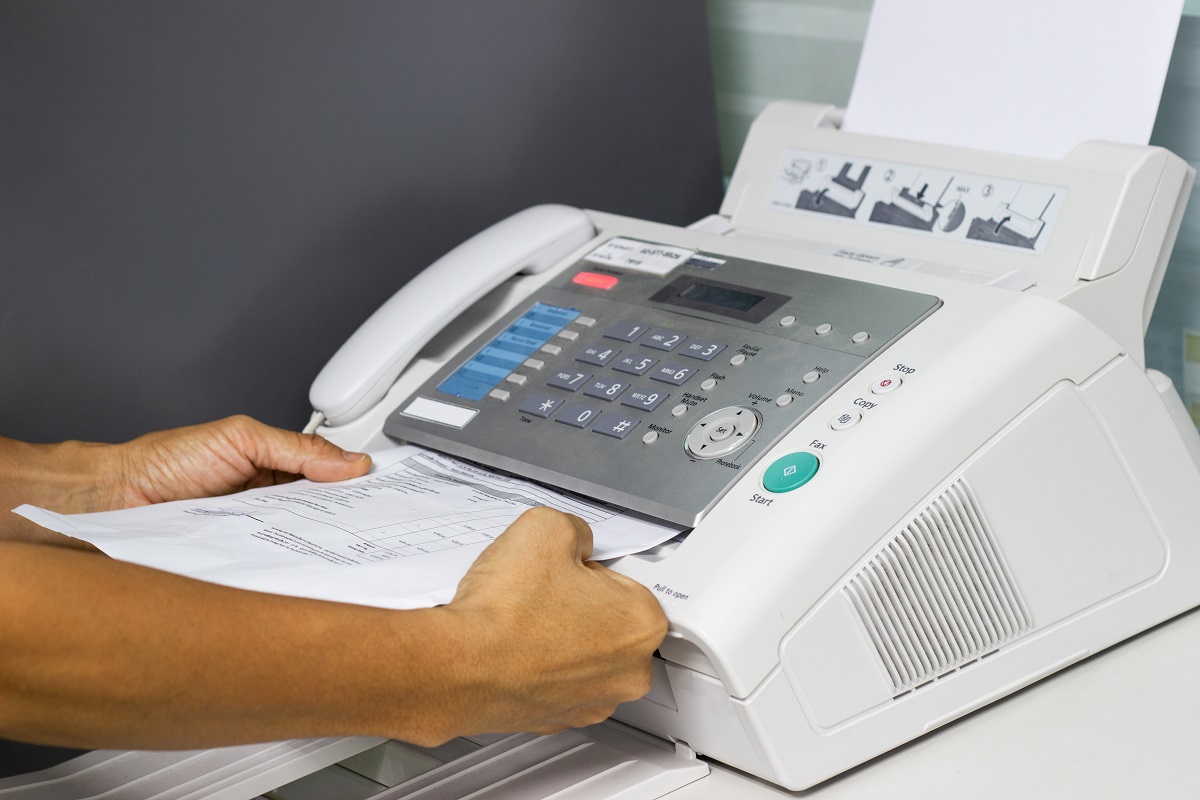
A fax, short for “facsimile,” is a communication technology that transmits printed material (like documents, images, or texts) from one location to another.
You know how when you email a document to someone, they can open it and see exactly what you wrote? Well, a fax does a similar job, but it’s a bit more old-school.
The word “fax” can refer to both the process of sending these documents (as in, “I’m going to fax this to you”) and the machine that does the sending (like, “I’ll put this in the fax machine”). It works over the telephone line – kind of like a phone call, but for papers.
How Fax Technology Works
Fax machines may seem like magic, but they’re really just a smart combination of scanning, encoding, and printing technology. Here’s a simple, step-by-step breakdown of what happens when you send a fax:
- Scanning: When you place your document in the fax machine, it scans the page, similar to how your eyes move across a page when you’re reading a book.
- Encoding: The scanned information (which is basically a big image of your document) is then turned into a format that can be transmitted over a phone line. This is called encoding.
- Transmitting: Your fax machine dials the number of the receiver’s fax machine. When it picks up, your machine sends the encoded information across the phone line. It’s kind of like your fax machine is telling the other fax machine a really detailed story about your document.
- Decoding and Printing: On the other side, the receiving fax machine gets the information and turns it back into an image. It then prints out a copy of your original document. So, it’s like the receiving fax machine listens to the story and then draws a picture based on what it heard.
Types of Fax Machines
There are several types of fax machines, each with its own benefits.
- Thermal Fax Machines: These use heat to print the received fax onto special thermal paper. They are low maintenance, but the downside is that the print fades over time.
- Inkjet Fax Machines: These machines use inkjet technology similar to a regular printer. They provide better-quality faxes, and the print doesn’t fade. But they are more expensive to run because you need to replace the ink cartridges.
- Laser Fax Machines: These are the crème de la crème of fax machines. They use the same technology as laser printers, providing the best print quality. They’re fast and efficient, but they come with a higher price tag.
- Multifunction Fax Machines: These machines are jacks of all trades. They can fax, print, scan, and copy. They’re great if you need to do all of these tasks and don’t want separate machines.
How To Send a Fax
Sending a fax might seem like a daunting task if you’ve never done it before, but it’s really quite straightforward. Here’s a simple guide to help you out:
- Preparation: First, you need to get your document ready. Make sure it’s clearly written or printed, as unclear text might not fax well.
- Loading the Document: Take your document and place it in the fax machine’s feeder. The way you do this might vary depending on the machine, but generally, you’ll need to place it face down or face up – look for a small icon or diagram on the machine to show you which way is correct.
- Dialing the Number: Now, you need to enter the fax number of the receiver’s machine. This is just like dialing a phone number because, remember, faxes work over the phone line.
- Sending the Fax: Once the number is dialed, hit the “send” or “start” button to get the ball rolling. The machine will then scan your document, convert it into a format that can be sent over the phone line, and dial up the receiving machine.
How To Receive a Fax
Receiving a fax is even simpler than sending one because the machine does most of the work. Here’s what happens:
- Machine Answering: When someone sends you a fax, your machine will ring like it’s getting a phone call. If it’s set to answer automatically, it’ll pick up and start receiving the fax.
- Receiving the Fax: The sending machine tells your machine all about the document, and your machine listens, translating that information back into an image.
- Printing the Fax: Once it’s got the whole story, your machine will print out the document. And voila, you’ve got your fax!
Understanding Fax Confirmation and Error Reports
After sending a fax, most machines will print out a little something called a confirmation or transmission report. This is basically a receipt that tells you whether the fax was sent successfully.
If all went well, it’ll usually just say “OK” or “successful” or something along those lines. It might also tell you how many pages were sent, how long it took, and the number you sent it to, which can be handy for keeping track of your faxes. But if something goes wrong, the report will tell you that too. It might say “error,” “failed,” or “busy,” depending on what the issue was.
Other reports may contain codes that represent specific errors indicating a problem with the machine itself. Each fax machine model has a manual or online resource where you can look up these codes to understand what’s wrong.
Bear in mind that you can easily resolve most of these problems by simply troubleshooting the fax machine. The manual usually provides specific instructions and guidelines for your machine’s model, which can help you understand its features, indicators, and error codes.
In Summary
A fax, or facsimile, is a communication technology that has been pivotal in transmitting printed materials from one place to another. Despite the advancements in digital communication, faxing continues to hold its ground in certain areas like business, healthcare, and legal sectors due to its reliability and directness.
The process of faxing, though seemingly complicated, is rather simple once understood. And understanding faxing is essential for effective communication, as it provides a reliable and direct document transmission solution that can be used to send information in a quick and efficient manner.


